
Harrison H. Jeffords was the Colonel of the 4th Michigan Volunteer Infantry Regiment in the Union Army of the Potomac during the American Civil War. He was noted for his heroism on July 2, 1863, during the Battle of Gettysburg, in which he died while protecting the United States flag.

The 124th New York Infantry Regiment, commonly known as the Orange Blossoms, was a volunteer regiment from Orange County, New York, during the American Civil War. Formed in Goshen during the summer of 1862, The unit was officially mustered into United States Service on September 5, 1862, by Col. Augustus van Horne Ellis, the regiment was made up of volunteers from the surrounding towns and a core of veterans from the 71st New York State Militia.

The 24th Michigan Infantry Regiment was an infantry regiment that served in the Union Army during the American Civil War. It was part of the Union Iron Brigade.
The 3rd New Jersey Infantry Regiment was an infantry regiment of the Union Army in the American Civil War. Composed of men from New Jersey, it served in the Army of the Potomac.
The 12th Illinois Cavalry Regiment was a volunteer cavalry regiment which served in the Union Army during the American Civil War.
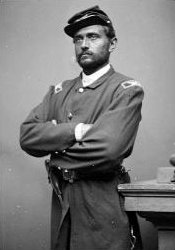
Augustus van Horne Ellis was an American lawyer, sea captain, and soldier. He was a brevet brigadier general in the Union Army during the Civil War, and was killed in action at the Battle of Gettysburg.
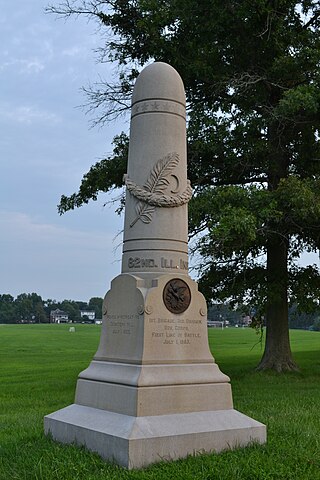
The 82nd Regiment Illinois Volunteer Infantry, known as the "2nd Hecker Regiment," was an infantry regiment that served in the Union Army during the American Civil War. It was one of the three "German" regiments furnished to the Union by Illinois. Approximately two-thirds of its members were German immigrants and most of the other third was composed of immigrants from various countries. Company C was almost entirely Jewish, and Company I all Scandinavians.

The 149th New York Infantry Regiment was an infantry regiment that served in the Union Army during the American Civil War.
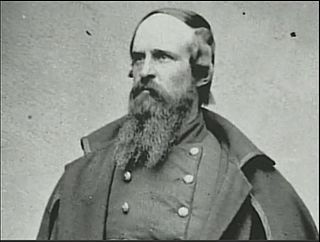
Edward Ephraim Cross was a newspaperman and an officer in the Union Army during the American Civil War.
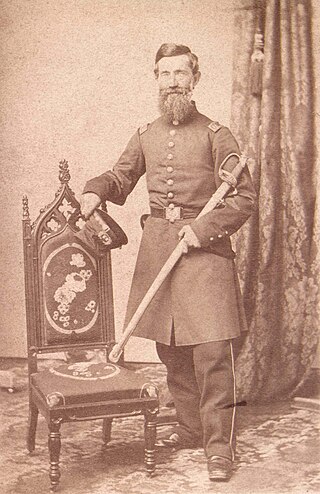
Silas Titus was a military officer who fought in the American Civil War in the Union Army. He was active in the organization of the city of Syracuse, New York, and served as an alderman for two years and as a supervisor in 1865. He was influential in the construction of the first 30 miles of continuous railroad in the United States.

The 125th New York Infantry Regiment was a volunteer regiment from Rensselaer County, New York, during the American Civil War. Formed during the summer of 1862, the unit was officially mustered into United States Service on 27–29 August 1862, by Col. George L. Willard. He had seen previous service in the Mexican War as well. Levin Crandall was commissioned lieutenant colonel, and James C. Bush major. The unit was mustered out on 5 June 1865.

The 121st New York Infantry Regiment, commonly known as the "Onesers" or "Upton's Regulars", was a volunteer regiment recruited during the American Civil War from Otsego County and Herkimer County, New York. The Hon. Richard Franchot was appointed colonel of the regiment and authorized to establish his headquarters at Richfield Springs, Otsego County. He proceeded without delay to organize the regiment, and on August 23, 1862, the regiment was mustered into the service of the Union Army. The command at that time consisted of 39 officers and 946 enlisted men. The 121st Regiment proceeded to Washington, arriving there on the morning of September 3, and was assigned provisionally to a brigade under Colonel Gibson with headquarters at Fort Lincoln.

James Clay Rice was a lawyer from Massachusetts who became a brigadier general of volunteers in the Union Army during the American Civil War. He was killed at the Battle of Spotsylvania Court House in May 1864.

The 140th New York Infantry Regiment was a volunteer infantry regiment that was created on September 13, 1862, for the Union Army during the American Civil War. From January 1864 they wore a Zouave uniform.
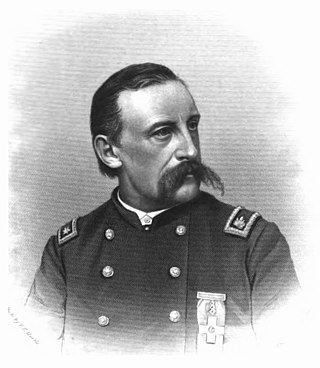
Augustus Wade Dwight was a lawyer who became an officer in the American Civil War. He served in 21 battles and was wounded three times, the last wound being fatal.

The 72nd New York Infantry Regiment was one of five infantry regiments formed by former U.S. Congressman Daniel Sickles and established as part of the Excelsior Brigade which fought with the Union Army during multiple key engagements of the American Civil War, including the Chancellorsville Campaign in Virginia, the Battle of Gettysburg in Pennsylvania, and the Overland Campaign. Leaders from the 72nd New York recruited men from New Jersey, as well as from cities and small towns across the State of New York.

The 12th New York Infantry Regiment was an infantry regiment in the Union Army during the American Civil War.

The 58th New York Infantry Regiment, also called the Polish Legion, was an infantry regiment of United States Volunteers in Union Army service during the American Civil War. The regiment was composed almost entirely of immigrant volunteers: Poles, Germans, Danes, Italians, Russians, and Frenchmen, most of whom were recruited in New York City in 1861.
The 143rd Pennsylvania Volunteer Infantry was an infantry regiment that served in the Union Army during the American Civil War.
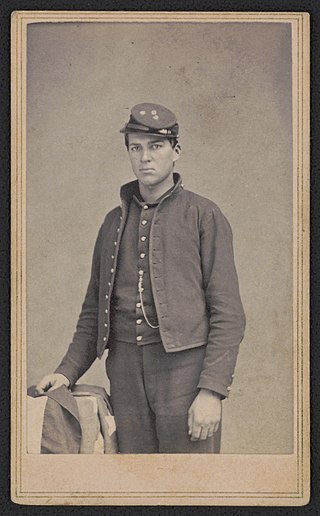
The 2nd New York Cavalry Regiment, officially known as the 2nd Regiment, New York Volunteer Cavalry, was a unit of the Union Army during the American Civil War. It served with the Army of the Potomac and fought in Stoneman's 1863 raid, the Wilson–Kautz Raid, and the Battle of Appomattox Station.












